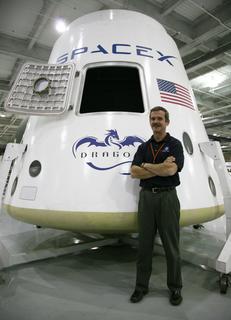 On December 19, 2012, Canadian astronaut Chris Hadfield lifted off above the barren plains of Kazakhstan en route to the International Space Station (ISS). He’ll make the sprawling orbital laboratory his home for five months, working alongside eight American astronauts and Russian cosmonauts as they conduct science experiments, test new technologies, berth commercial re-supply craft with Canadarm2 and carry out spacewalks.
On December 19, 2012, Canadian astronaut Chris Hadfield lifted off above the barren plains of Kazakhstan en route to the International Space Station (ISS). He’ll make the sprawling orbital laboratory his home for five months, working alongside eight American astronauts and Russian cosmonauts as they conduct science experiments, test new technologies, berth commercial re-supply craft with Canadarm2 and carry out spacewalks.
Hadfield, who has earned distinctions as the first Canadian to operate the Space Shuttle’s Canadarm in space and the nation’s first to walk in space, will also serve as the first Canadian commander of the ISS. During the launch and two-day trip to the Space Station, Hadfield will strap into a Russian Soyuz capsule, just to the left of spacecraft skipper Roman Romanenko and National Aeronautics and Space Administration’s (NASA) Tom Marshburn. As the “left seater,” Hadfield will back up Romanenko, ready to shoulder the Soyuz piloting role if circumstances warrant—a demanding responsibility that Hadfield began to train for a decade ago.
Hadfield became fluent in Russian in order to achieve proficiency in multiple variants of the recently upgraded Soyuz capsule. As the newcomers dock with the Station, they will be greeted by Expedition 34 commander Kevin Ford, of NASA, and Russians Oleg Novitskiy and Evgeny Tarelkin. Hadfield will serve as a Station flight engineer until Ford’s crew departs in March 2013, signaling the start of Expedition 35.
As one of his most important tasks, Hadfield will use Canadarm2 to capture at least one of the new US commercial cargo capsules slated for launch. The success of NASA’s strategy to rely upon unpiloted supply craft depends on the skills of the astronauts trained to reach out with Canadarm2 to grab and berth the new Dragon and Cygnus vehicles—a skill referred to as “track and capture”. Hadfield will be prepared to assist Ford with the capture of a SpaceX Dragon capsule within weeks of his arrival. In April, Hadfield will lead the capture.
Hadfield will also head one and possibly two scheduled spacewalks—one of which to equip an aging external radiator with grapple beams. The grapple beams would permit astronauts inside the Station to remove and replace a failed radiator with Canadarm2 rather than undertake a hasty spacewalk. During the second outing, the spacewalkers would stretch data cabling from the Station’s US segment to the docking port for a new Russian science module. In addition, Hadfield will be the Systems Lead for the Station’s European and Japanese science modules and work on science experiments on behalf of Canadian scientists.
As an accomplished rhythm guitarist and vocalist who regularly performs with two astronaut bands, Hadfield has ambitious plans for his leisure moments as well. He even chose the shape of a guitar pick for his official Canadian patch.
When time permits, Hadfield intends to retreat to the cupola, the Station’s domed observation deck with a Canadian Larrivee guitar and production gear, already stowed aboard the outpost. Hadfield plans to record songs composed with his brother Dave, a musician in his own right. Along with the Barenaked Ladies’ Ed Robertson, he will also co-write the official song for Music Monday 2013 to celebrate music education. This initiative is part of a new partnership between CBC Music, the Coalition for Music Education and the Canadian Space Agency (CSA) that will literally take the annual Music Monday celebration to new heights.
Source: Canadian Space Agency
